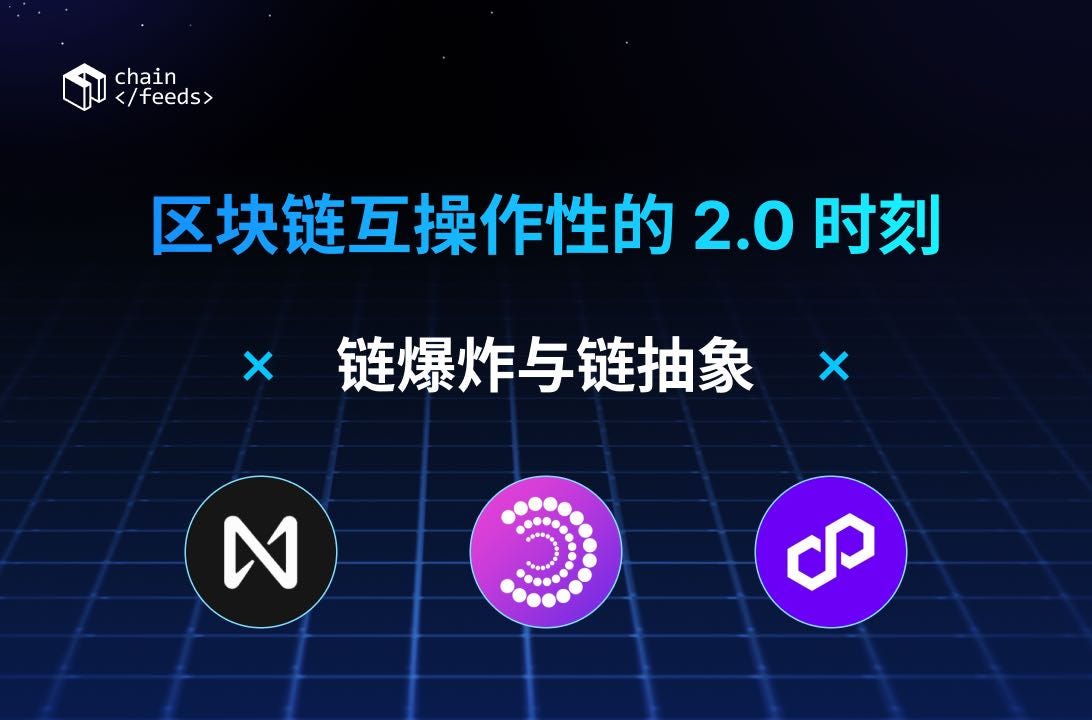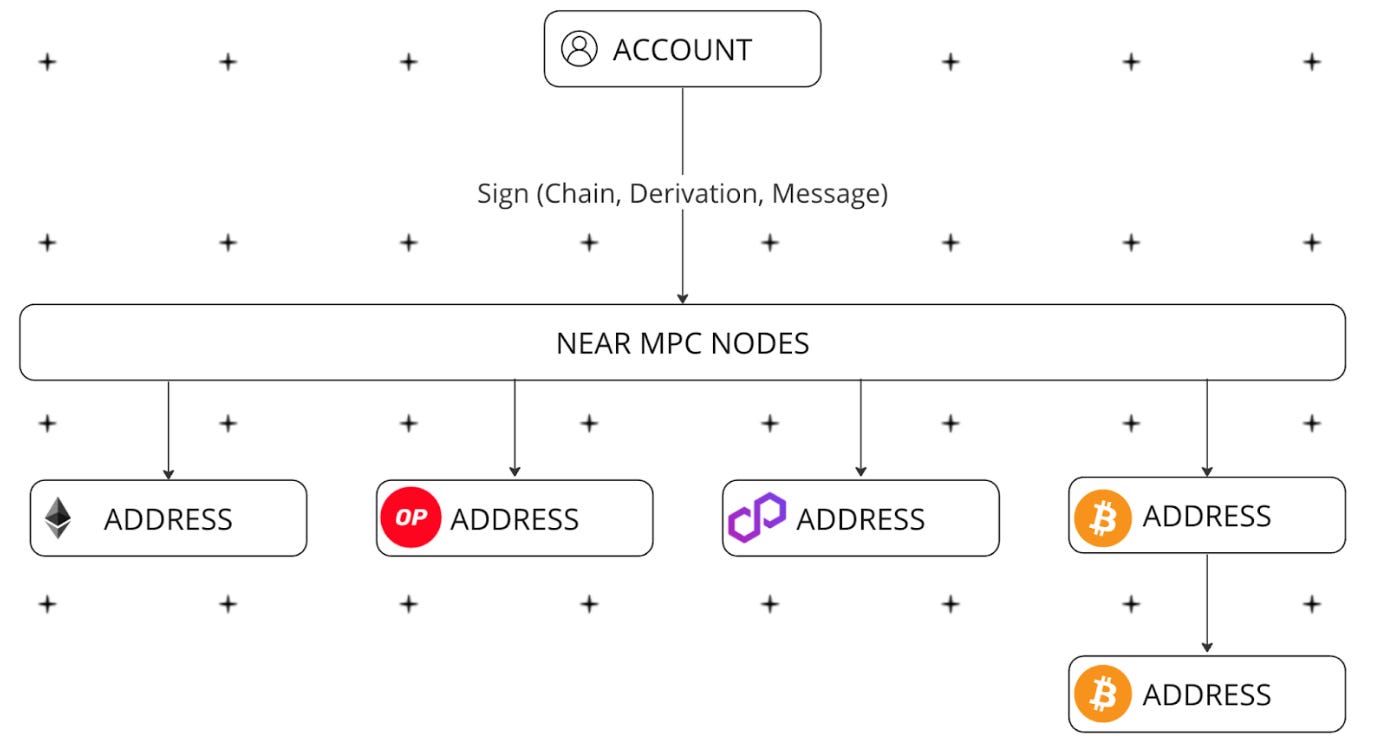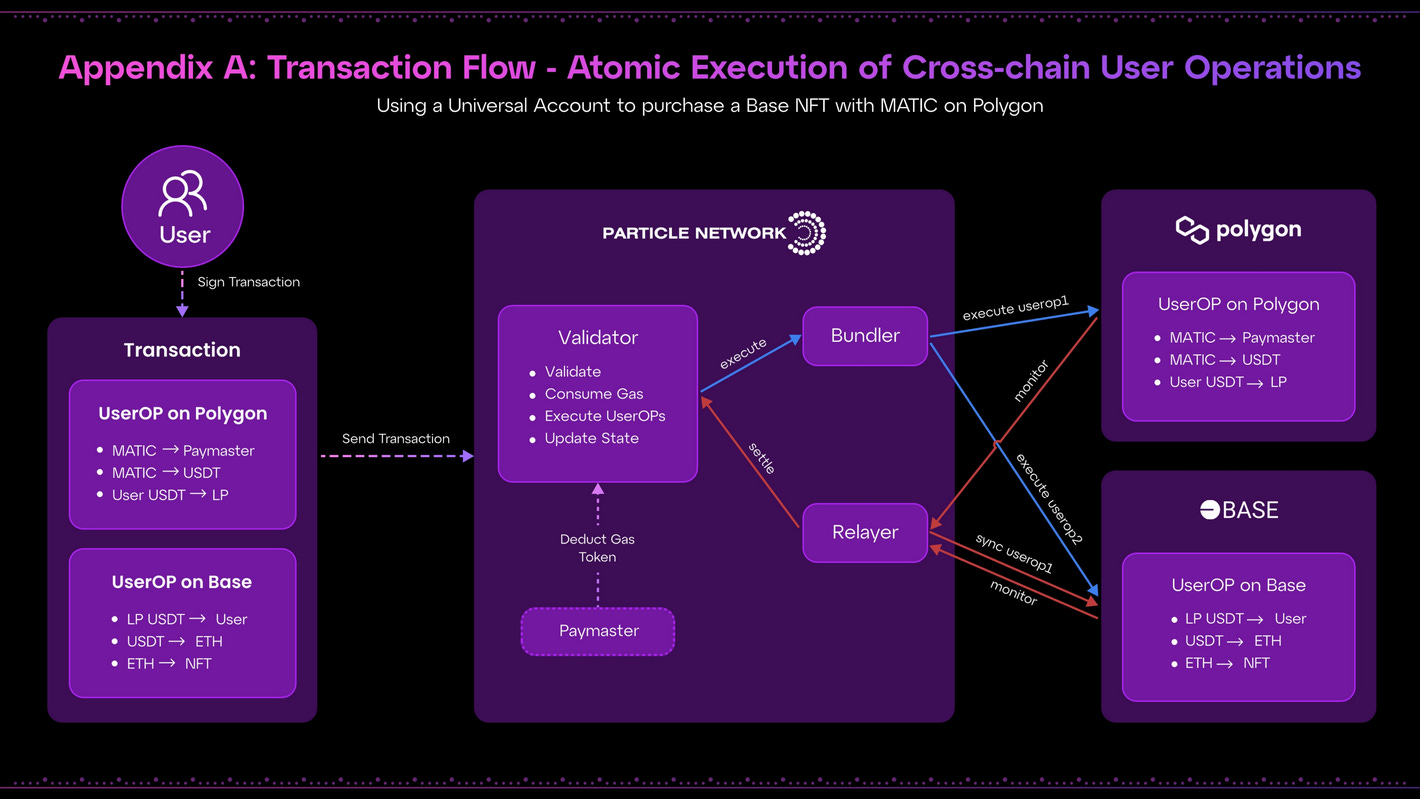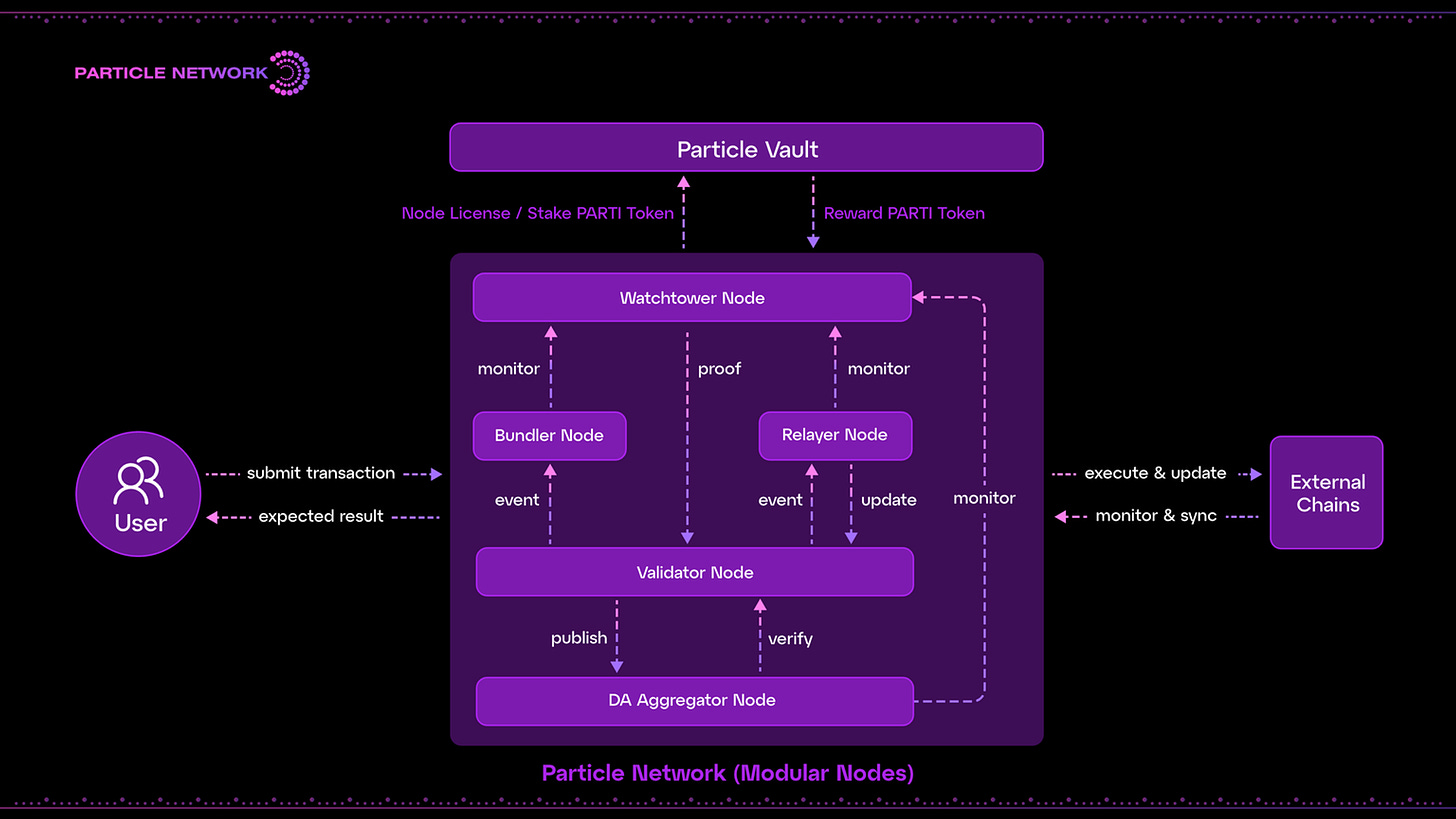Comparison of representative projects for three major chain abstraction solutions: NEAR, Particle, and Polygon.
Written by: ZHIXIONG PAN
Although it may be a bit exaggerated to say so, the speed of application innovation may not be as fast as the speed at which public chains are added.
Especially recently, with the improvement of modular public chains and RaaS, it has promoted the rapid development of "scenario chains". For example, DePIN, AI, or financial applications all require an independent blockchain network, and many financial or comprehensive institutions also need to issue their own chains (HashKey Chain and Base).
In addition, Bitcoin's layer 2 has also been intensively launched in the past two months, such as Citrea, BOB, Bitlayer, Merlin Chain, etc. Finally, there is the eternal topic of "performance", which is also driven by parallel virtual machines (and Parallel EVM), such as Monad, MegaETH, Artela, etc.
For ordinary users, managing assets and applications across multiple chains has become increasingly painful, not to mention having to leave some Gas (transaction fees) on each chain for unexpected needs.
These problems have been partially solved in the past few years with the popularization of "cross-chain bridges", and sometimes it is also classified under the topic of "interoperability". But ultimately, how to bring together these liquidity or connect all these experiences is what truly matters.
This is why the new concept and narrative of "chain abstraction" has emerged, which can also be seen as "interoperability 2.0" or the ultimate form of such products.
Three Solutions
It is precisely because of these experiential issues that the interoperability of blockchains has become increasingly important. However, users' goal is not to use "cross-chain bridges", but to achieve more specific needs, such as trading specific assets or using certain applications.
In scenarios with only a few chains, users can barely manage cross-chain bridges and multi-chain assets on their own. But with the competition of so many chains in the future, as well as the dispersion of applications and liquidity, it is completely unrealistic for users to manage these assets on their own. It is common in the community to hear feedback like, "I completely forget what assets I have staked in which chains and protocols."
Users do not want to understand what "chains" are, they just want to know what they can be used for. Therefore, "needs" should be what users need to understand, and hiding "chains" under the needs is the normal cognition of a regular user.
It is precisely because cross-chain bridges cannot solve the user's need to manage assets uniformly and use applications directly that the concept of chain abstraction has been proposed as another important node under the topic of "interoperability".
Many teams are already focusing on "chain abstraction" and providing solutions, but overall, these teams have similar modules and architectures, but their respective focuses are also very different, and can be divided into three most representative directions: signature network, general account layer, and cross-chain bridge aggregation.
It is also easy to understand that for the chain abstraction solution, users usually need a unified account, which can submit transactions on multiple chains, and solve problems such as Gas payment and cross-chain information communication. In addition to the common parts mentioned above, these solutions focus on different independent modules due to their own characteristics.
Signature Network: NEAR
The signature network solution was proposed by NEAR and is called "Chain Signatures". The core of this technology allows addresses generated on the NEAR chain to become the user's main account, while accounts and transactions on other chains are signed and submitted to the target chain through a decentralized multi-party computation (MPC) network.
In addition, NEAR has also introduced a module called Multichain Gas Relayer. The main function of this module is to pay the Gas fees for transactions, solving the problem of users needing to hold native tokens on various chains when conducting cross-chain transactions. Currently, this feature supports the payment of Gas fees using NEAR or NEP-141 tokens on NEAR, but does not support a more extensive Gas abstraction.
The fundamental reason for this design is that NEAR is not an EVM-compatible chain, but it is well known that the mainstream in the market is still EVM-compatible chains, and the number is much larger. Therefore, interoperability with EVM-compatible chains can only be achieved through the MPC network.
This will also bring some experiential issues:
High migration costs: For users in the Ethereum ecosystem, they cannot directly migrate to the NEAR ecosystem (e.g., using MetaMask), and still need to create a new account through NEAR.
Longer transaction confirmation process: Because the EVM multi-chain wallet created through NEAR is an EOA (i.e., a wallet generated through public and private keys), for cross-chain transactions that require multiple transactions (at least including authorization + transaction) to be queued and signed in parallel, the user may need to wait for a longer confirmation process. And because it is done in multiple transactions, the total Gas consumed cannot be optimized.
In terms of token utility, NEAR's native token will become the Gas token for the entire chain abstraction process, and users need to consume NEAR to pay for all Gas costs in the chain abstraction process.
General Account: Particle Network
The Particle Network's solution focuses more on the account itself, using an independent blockchain network to manage the state and assets on other chains. To put it more plainly, users only need to use a Particle Network address to access assets and applications on all chains, and Particle refers to this address as the Universal Account.
As for message relaying, i.e., cross-chain message transmission, Particle's L1 listens to the execution of UserOps on external chains through its own Relayer Node on the chain. However, since it is still based on EVM, if it needs to support addresses of non-EVM-compatible chains, it may require other modules for support, similar to NEAR's MPC network.
So, the big difference here is that, unlike NEAR, Particle Network's design prioritizes EVM and is native to an EVM address, making it easy to access any chain and application within the EVM ecosystem, or wallets, etc.
From a user's perspective, Particle Network's EVM-first approach allows users to easily migrate accounts created in the EVM ecosystem, simply by adding a network to MetaMask, just as simple as adding the Optimism or Arbitrum network at the time.
As an example of a scenario that would be strongly perceived by heavy or Web 2.5 users: USDT is distributed across several chains, for example, 100 USDT on chain A, 100 USDT on chain B, 100 USDT on chain C. When a user wants to use these assets to purchase assets on chain D, it can be very troublesome. Although these USDT assets all belong to the user, the user experience cannot be easily achieved because these assets are fragmented. With the Universal Account provided by Particle L1, users can aggregate purchasing power distributed across different chains, purchase assets on any chain with a single click, and choose any token as Gas. The underlying operating mechanism can be referred to in the image below.
Additionally, the Particle solution differs from NEAR in terms of transaction granularity and can also achieve batch signing and transactions through aggregation. This means users can bundle multiple transactions together, saving not only the number of times and time required for user signatures, but also the Gas involved in complex transaction scenarios.
Particle has designed multiple consumption and usage scenarios for its token $PARTI. As an ordinary user, the most direct use is as the Gas token for the Universal Account, enabling transactions on any blockchain. If there is no $PARTI, other tokens can be used for payment (but regardless of which token is used to pay Gas, $PARTI will be consumed). For the entire ecosystem, Particle L1 has 5 node roles (refer to the image below), and users can stake $PARTI to become a node, participate in network consensus and transactions, and earn more rewards. In addition, the $PARTI token can also act as an LP token within the Particle Network, participating in cross-chain atomic swaps and earning transaction income.
Cross-Chain Bridge Aggregation: Polygon AggLayer
Two typical solutions for cross-chain bridge aggregation are Polygon AggLayer and Optimism's Superchain. They are both designed as a complete architecture with a priority on the Ethereum ecosystem.
Compared to traditional cross-chain bridges, AggLayer aims to standardize the cross-chain bridge contracts, so that each chain does not need to have independent smart contracts with Ethereum. Therefore, in this solution, the Ethereum mainnet is the center of everything, and then all cross-chain information is aggregated through zero-knowledge proofs.
However, the problem here is that other chains may not necessarily accept this standardized cross-chain bridge contract, which may create some resistance to integrating new public chains, unless this solution can be widely accepted by all other public chains or become an industry standard. From a different perspective, AggLayer is actually an additional feature for teams developing chains using the Polygon CDK, so it won't come with this feature if CDK is not used.
Optimism's Superchain is somewhat similar, as they will first focus on interoperability between Ethereum Layer2s, as some teams have already developed more Layer2 networks using the OP Stack, and they can use this method to achieve interoperability. But more importantly, it is about how to expand to a wider range of other public chain networks.
So, in terms of user experience, AggLayer and Superchain, being bound to the EVM ecosystem, can also easily migrate from MetaMask, but they cannot be integrated into ecosystems outside of EVM.
Conclusion
Although these solutions have differences in focus, their common goal is the same: to provide users with a simple and intuitive way to manage multi-chain assets and applications in a rapidly expanding blockchain network. Each team is working on how to keep the operation simple and clear for users in a multi-chain environment.
Looking at the three solutions, NEAR's signature network is centered around the NEAR network and implements cross-chain signatures through a decentralized MPC network. Particle Network's Universal Account focuses on enhancing interoperability through the powerful EVM ecosystem, while also being able to integrate with other public chain ecosystems. Polygon AggLayer focuses on optimizing interoperability within the Ethereum ecosystem through aggregated cross-chain bridges. These solutions, while different in technical implementation and application focus, all aim to improve the convenience and reduce the complexity of user cross-chain operations.
Ultimately, I believe that these technology choices will converge. Because they all aim for the same ultimate goal - to improve the user-friendliness and interoperability of the blockchain ecosystem. With the development of technology and further industry integration, we may see more cooperation and integration, and the boundaries between these solutions may become blurred. So, what's more important now is not just the technical choices and narratives, but to land as soon as possible and let users perceive this new experience of full-chain aggregation.
免责声明:本文章仅代表作者个人观点,不代表本平台的立场和观点。本文章仅供信息分享,不构成对任何人的任何投资建议。用户与作者之间的任何争议,与本平台无关。如网页中刊载的文章或图片涉及侵权,请提供相关的权利证明和身份证明发送邮件到support@aicoin.com,本平台相关工作人员将会进行核查。










